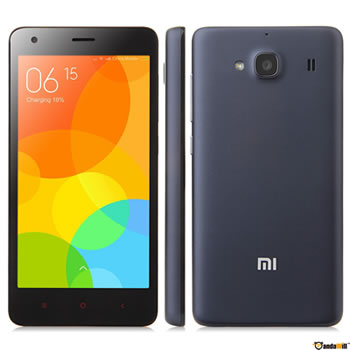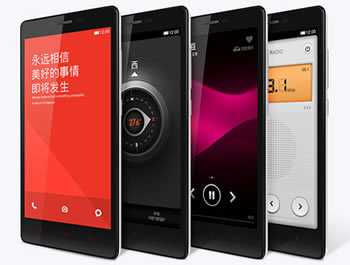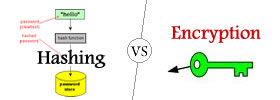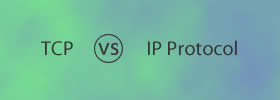Difference between Redmi 2 and Redmi Note 4G
Key Difference: Redmi 2 is a smartphone with a 4.7 inch display, while Redmi Note 4G is a phablet, a combination of a phone and a table, with a 5.5 inch display.
 Chinese phone manufacturer, Xiaomi, is quickly growing in the Indian market as a budget smartphone company. The company has introduced multiple new smartphones and even as a successful fitness band in the Market. Although Xiaomi took form in 2010 and sold it first phone in China in 2011, it has continued to steadily grow in numerous markets around the world. It currently holds its position as world's 4th largest smartphone distributor.
Chinese phone manufacturer, Xiaomi, is quickly growing in the Indian market as a budget smartphone company. The company has introduced multiple new smartphones and even as a successful fitness band in the Market. Although Xiaomi took form in 2010 and sold it first phone in China in 2011, it has continued to steadily grow in numerous markets around the world. It currently holds its position as world's 4th largest smartphone distributor.
Redmi 2 and Redmi Note 4G are two devices that belong to the company. Redmi 2 is a smartphone, while Redmi Note 4G is a phablet, a combination of a phone and a tablet.
Redmi 2 introduced into the market in the beginning of 2015, quickly became a popular smartphone in the budget phone segment. The phone with a 4.7 inch IPS LCD touchscreen with a spectacular pixel density of 312 ppi, proving a sharp display with crisp colors. According to the company Redmi 2 comes with a, “a fully laminated display which allows pixels to sit close to the glass, so colors pop right off the screen and are less affected by glare.” The screen is also protected against scratches by the AGC Dragontrail Glass.
The phone is paired with an 8 MP rear snapper and a 2MP front camera, with the back camera using a backside illumination (BSI) for great low-light performance at night, while infrared sensor protection improves image quality in sunlight. The phone comes with Beautify, which guess the users age and gender and applies appropriate filters to enhance the selfies. The phone comes with 8 GB internal memory and a memory slot that expands up to 64 GB. It has 1 GB RAM.
 Under the hood, the phone comes with a 1.2 GHz Quad-core Snapdragon that runs on a 64-bit architecture, allow applications and the phone to run faster and more smoothly. Redmi 2 comes with Android 4.4.4 (Kitkat) and the company’s MIUI 6.0 user interface. The phone runs on a powerful 2200 mAh Li-Po battery. The phone also has a fast charging system.
Under the hood, the phone comes with a 1.2 GHz Quad-core Snapdragon that runs on a 64-bit architecture, allow applications and the phone to run faster and more smoothly. Redmi 2 comes with Android 4.4.4 (Kitkat) and the company’s MIUI 6.0 user interface. The phone runs on a powerful 2200 mAh Li-Po battery. The phone also has a fast charging system.
In comparison, Redmi Note 4G was an older model that was released in August 2014. The phablet came with a 5.5 inch IPS LCD touchscreen that is not protected against scratches. It offers the same pixels as the Redmi 2, but has a lower ppi of 267, owing to the larger screensize. The phone is also slightly on the heavier side weighing 185 grams.
The phone is paired with a 13 MP HD camera as the primary camera and a 5 MP front camera. The cameras comes with af/2.2, 28 mm wide-angle lens lets you capture more with each shot. The phone runs on a powerful 1.6 GHz Quad-core Snapdragon 400, with Android 4.4.2 KitKat and MIUI 5.0. It has a 8 GB internal memory and expandable card slot with 2 GB RAM. The phone is powered by Li-Po 3100 mAh battery, powerful enough to run for 38 hours without a charge.
Comparison between Redmi 2 and Redmi Note 4G:
|
|
Redmi 2 |
Redmi Note 4G |
|
Launch Date |
January 2015 |
August 2014 |
|
Company |
Xiaomi |
Xiaomi |
|
Size |
134 x 67.2 x 9.4 mm |
154 x 78.7 x 9.5 mm |
|
Display |
4.7 inch IPS LCD capacitive touchscreen |
5.5 inchesIPS LCD capacitive touchscreen |
|
Screen Resolution |
720 x 1280 pixels |
720 x 1280 pixels |
|
PPI |
312 ppi pixel density |
267 ppi pixel density |
|
Protection |
AGC Dragontrail glass |
N/A |
|
Weight |
133 g |
185 g |
|
4G Compatible |
Yes |
Yes |
|
GUI |
MIUI 6.0 |
MIUI 5.0 |
|
CPU speed |
1.2 GHzQuad-coreCortex-A53 |
1.6 GHzQuad-core Cortex-A7 |
|
GPU |
Adreno 306 |
Adreno 305 |
|
OS |
Android OS v4.4.4 (KitKat) |
Android OS, v4.2 (Jelly Bean), upgradable to v4.4.2 (KitKat) |
|
Chipset |
Qualcomm MSM8916 Snapdragon 410 |
Qualcomm MSM8928 Snapdragon 400 |
|
RAM |
1 GB |
2 GB |
|
SIM Size |
Micro-SIM |
Micro-SIM |
|
Dual SIM |
Yes |
No |
|
Internal Memory |
8 GB |
8 GB |
|
Expandable Memory |
Up to 32 GB |
Up to 64 GB |
|
Sensors |
Accelerometer, gyro, proximity, compass |
Accelerometer, gyro, proximity, compass |
|
Connectivity |
2G, 3G, 4G, Wi-Fi, Bluetooth, GPS, USB, USB OTG |
2G, 3G, 4G, Wi-Fi, Bluetooth, GPS, USB |
|
Data |
GPRS, EDGE |
GPRS, EDGE |
|
Speed |
HSPA, LTE Cat4 150/50 Mbps |
HSPA, LTE Cat4 150/50 Mbps |
|
WLAN |
Wi-Fi 802.11 b/g/n, Wi-Fi Direct, hotspot |
Wi-Fi 802.11 a/b/g/n/ac, dual-band, Wi-Fi Direct, hotspot |
|
Bluetooth |
Bluetooth v4.0, A2DP, LE |
Bluetoothv4.0, A2DP, LE |
|
USB |
microUSB v2.0, USB Host |
microUSB v2.0, USB Host |
|
Primary Camera |
8 MP 3264 x 2448 pixels |
13 MP4128 x 3096 pixels |
|
Secondary Camera |
2 MP 720 pixels |
5 MP 720 pixels |
|
Video |
1080p@30fps |
1080p@30fps |
|
Camera Features |
autofocus, LED flash, 1.4 µm pixel size, geo-tagging, touch focus, face/smile detection, HDR |
autofocus, LED flash, Geo-tagging, touch focus, face/smile detection, HDR |
|
Sound Enhancement |
Active noise cancellation with dedicated mic |
Active noise cancellation with dedicated mic |
|
Audio supported formats |
MP3/WAV/eAAC+/FLAC player |
MP3/WAV/eAAC+/FLAC player |
|
Video supported formats |
MP4/H.264 player |
MP4/H.264 player |
|
Battery Capacity |
Li-Po 2200 mAh battery |
Li-Po 3100 mAh battery |
|
Talk time |
N/A |
Up to 38 h (3G) |
|
Stand-by |
N/A |
Up to 775 h (3G) |
|
Available Colors |
Black, White, Yellow, Pink, Green |
Black, White |
|
Messaging |
SMS(threaded view), MMS, Email, Push Mail, IM |
SMS(threaded view), MMS, Email, Push Mail, IM |
|
Browser |
HTML5 |
HTML5 |
|
Radio |
FM radio |
FM radio |
|
GPS |
A-GPS, GLONASS, Beidou |
A-GPS, GLONASS, Beidou |
|
Java |
No |
No |
|
Additional Features |
Fast battery charging: 30% in 30 min (Quick Charge 1.0) Photo/video editor Document viewer |
Photo/video editor Document viewer Voice memo/dial/commands |
Image Courtesy: pandawill.com, gsmarena.com









Add new comment